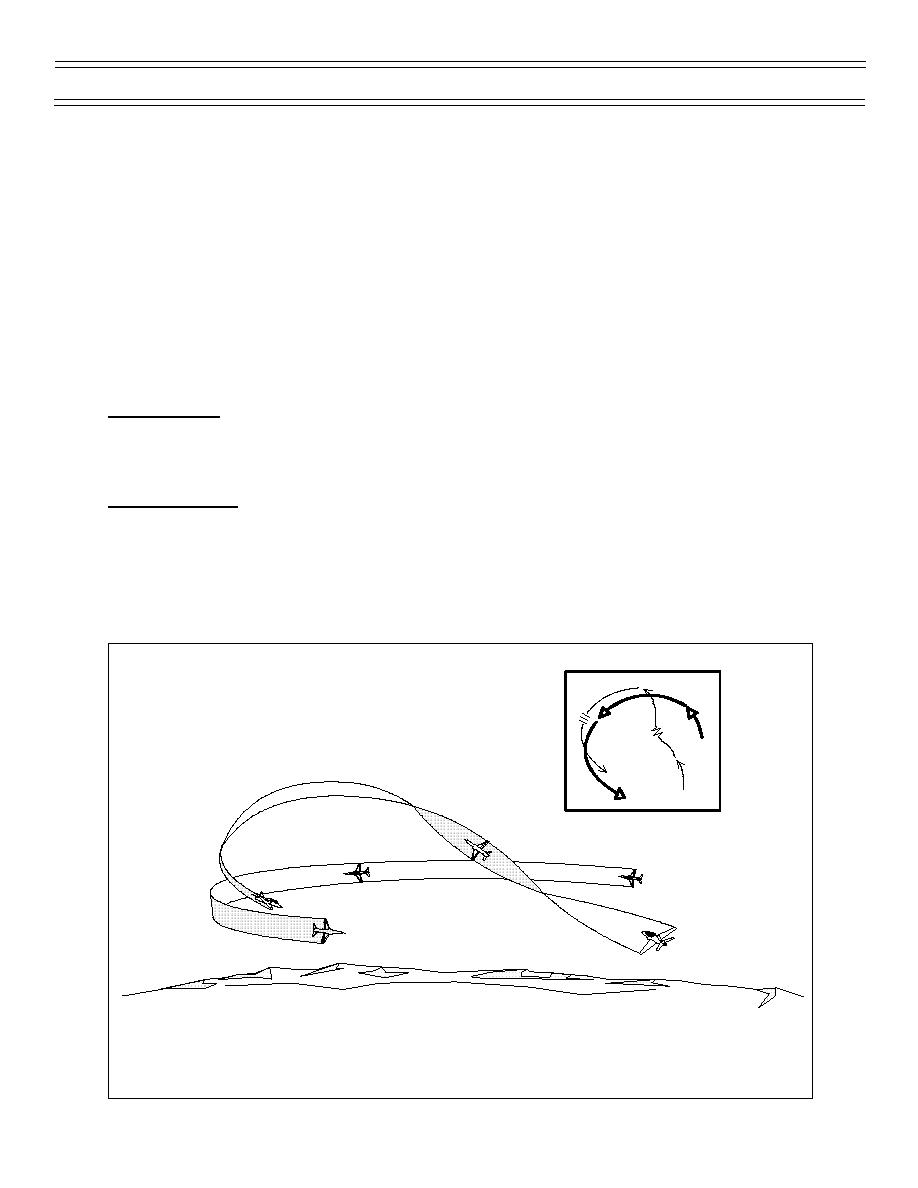
Tactical Formation
Flight Procedures
to make a series of “Pipper’s on, tracking” and “Pipper’s off” calls as you practice staying in the gun
envelope and keeping the bogey in the reticle.
When you finish the exercise and pull off the bogey, remember to toggle the master armament switch to
SAFE, the video recorder to OFF, and turn the weapons selector switch to OFF. Switchology is an
important habit pattern to form.
VARIATIONS
As your proficiency increases, you can expect to be presented with more difficult tracking problems. The
bogey will increase the difficulty of the maneuver by adding more g, unloading, and using constant
reversals. You cannot expect the bogey to remain on a steady or predictable course in air-to-air combat.
However, the fundamental requirements for tracking remain the same: smoothly pulling and maintaining
lead on the target.
Bogey Reversal
As you recognize the bogey reversal, quickly roll to the inside of the bogey’s turn to reestablish lead.
Remember that since you were momentarily on the outside of the bogey’s turn, the bogey may have
extended out of guns range. You may need to perform a modified low yo-yo to close nose-to-tail.
Displacement Roll
The displacement roll is another lag maneuver available (Figure 22). This maneuver reduces closure by
displacing your aircraft relative to the bogey’s flight path.
As you recognize excessive closure, attempt to align fuselages on the inside of the bogey’s turn. Raise
the nose above the bogey’s aircraft. Roll away from the turn towards the bogey’s six, varying g as
necessary to displace your flight path. Use rudder to maintain fuselage alignment. Control the rate of roll
and heading differential in order to arrive in range with lead pursuit. Use either a slow roll rate to increase
2
2
1
3
1
3
2
2
1
Defender
3
1
3
Attacker
Figure 22: DISPLACEMENT ROLL
(4-03) Original
Page 28


 Previous Page
Previous Page
